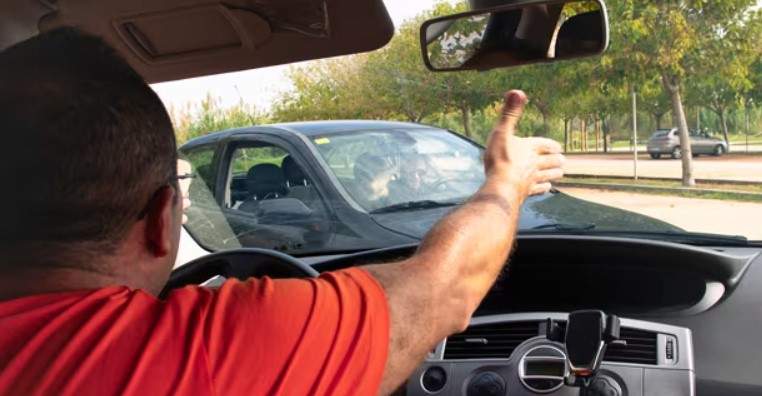As a frequent traveler on the road, encountering traffic delays, reckless drivers, and unexpected situations is not uncommon. However, how we respond to these incidents can make a significant difference in our overall driving experience. Road rage is a prevalent issue that affects many individuals and can lead to dangerous situations on the road. In this article, I will discuss what road rage is, its causes, signs, effects, and most importantly, provide you with essential tips on how to avoid road rage and ensure a safe driving environment for yourself and others.
What is Road Rage?
Road rage is a term used to describe aggressive or violent behavior exhibited by drivers on the road. It often involves yelling, gestures, and even physical altercations between drivers. Road rage can stem from feelings of frustration, impatience, or anger while driving, leading individuals to lose control of their emotions and act irrationally behind the wheel.
Understanding the Causes of Road Rage
Traffic Congestion
Dealing with heavy traffic or unexpected delays can be a significant trigger for road rage. Sitting in bumper-to-bumper traffic for long periods can test anyone’s patience and lead to increased frustration levels.
Disregard for Traffic Laws
Encountering drivers who blatantly ignore traffic laws, such as speeding, cutting off other vehicles, or running red lights, can be infuriating and contribute to road rage.
Stress and Aggravation
External stressors from work, personal life, or other factors can spill over into driving behavior, causing individuals to be more reactive and prone to road rage.
Feeling of Powerlessness
When faced with situations beyond our control, such as road closures, accidents, or detours, some drivers may lash out in frustration, leading to road rage incidents.
Personal Issues
Individuals dealing with anger management issues, unresolved conflicts, or mental health problems may be more susceptible to road rage outbursts.
Signs of Road Rage
Recognizing the signs of road rage in yourself or other drivers is crucial in preventing dangerous situations on the road. Here are some common signs of road rage to look out for:
- Excessive honking or flashing lights
- Aggressive tailgating or cutting off other vehicles
- Yelling, cursing, or making offensive gestures
- Speeding and weaving in and out of traffic
- Intentionally blocking other drivers or refusing to yield
The Effects of Road Rage
Road rage can have serious consequences, not only for the individuals involved but also for other drivers on the road. Some of the potential effects of road rage include:
- Increased risk of accidents and injuries
- Legal repercussions such as fines or license suspension
- Damage to vehicles
- Emotional stress and mental health issues
- Negative impact on relationships and reputation
Tips to Avoid Road Rage
Now that we have a better understanding of road rage, let’s explore some practical tips on how to avoid road rage and maintain a level-headed attitude while driving.
Practice Relaxation Techniques
Before hitting the road, take a few moments to practice deep breathing exercises, progressive muscle relaxation, or mindfulness techniques to help calm your mind and reduce stress levels. By starting your journey with a relaxed mindset, you’ll be better equipped to handle any potential triggers that come your way.
Listen to Soothing Music
Creating a calming playlist of your favorite music or podcasts can help create a more pleasant driving environment and distract you from stressful situations on the road. Avoid listening to loud or aggressive music that may exacerbate feelings of irritability or anger.
Plan Ahead and Allow Extra Time
One of the primary causes of road rage is feeling rushed or running late to your destination. To avoid unnecessary stress, plan your route in advance, and factor in extra time for potential delays or traffic congestion. By giving yourself a buffer, you’ll be less likely to react impulsively to setbacks on the road.
Maintain a Safe Distance
Keep a safe following distance between your vehicle and the car in front of you to reduce the likelihood of tailgating or rear-end collisions. Allow at least a two-second gap in normal conditions and increase this distance during inclement weather or heavy traffic.
Avoid Engaging with Aggressive Drivers
If you encounter an aggressive or reckless driver on the road, it’s essential to remain calm and avoid escalating the situation. Do not retaliate by engaging in aggressive driving behaviors or making provocative gestures. Instead, focus on safely navigating away from the other driver and contacting authorities if necessary.
Seek Help if Needed
If you find yourself unable to control your emotions or are involved in a road rage incident, don’t hesitate to seek help from a mental health professional or counselor. They can provide you with strategies to manage anger and stress effectively and prevent future road rage episodes.
FAQs
1. How common is road rage?
Road rage is more common than you might think, with a significant percentage of drivers admitting to experiencing road rage or aggressive behaviors while driving. It’s essential to address this issue proactively to ensure road safety for everyone.
2. Can road rage be considered a criminal offense?
In some cases, road rage incidents can escalate to the point of criminal behavior, such as assault, vandalism, or reckless driving. It’s crucial to report any instances of road rage to law enforcement authorities to prevent further escalation.
3. What should I do if I encounter a road rage situation?
If you find yourself in a road rage situation, it’s crucial to stay calm, avoid confrontation, and focus on your safety. Do not engage with the aggressive driver and try to remove yourself from the situation as quickly and safely as possible.
4. How can I manage my anger while driving?
Managing anger while driving involves practicing self-awareness, relaxation techniques, and having a positive attitude towards other drivers. By focusing on safe and defensive driving habits, you can reduce the likelihood of being triggered by road rage incidents.
5. Is road rage linked to mental health issues?
Road rage can be associated with underlying mental health issues such as anger management problems, anxiety, or depression. Seeking professional help and therapy can address these issues and prevent them from escalating on the road.
6. What are the long-term consequences of road rage?
The long-term consequences of road rage can include legal issues, damage to relationships, emotional stress, and a negative impact on one’s reputation. It’s essential to address road rage proactively and seek help if needed to avoid these negative outcomes.
Conclusion
In conclusion, road rage is a prevalent issue that can have serious consequences for drivers and others on the road. By understanding the causes, signs, and effects of road rage, and implementing practical tips to avoid road rage, we can create a safer driving environment for everyone. Remember to stay calm, patient, and respectful towards other drivers, and prioritize safety above all else. Let’s work together to combat road rage and promote responsible driving habits on the road. Drive safely, and remember, it’s all about avoiding road rage – how to avoid!



